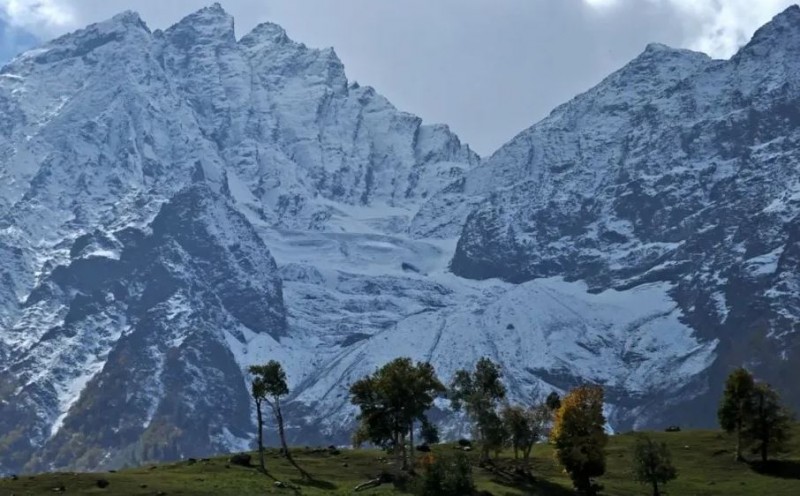
The rising temperatures in Kashmir pose a threat to over 100 active permafrost areas, also known as rock glaciers, with the potential danger of melting. A recent study conducted by researchers from Amrita School for Sustainable Futures at Amrita Vishwa Vidyapeetham in Kerala, led by Assistant Professor Remya S. N., reveals alarming findings. The report published in Down to Earth (DTE) states that more than 100 rock glaciers in the region are experiencing uplift, indicating the onset of permafrost thaw. If the area continues to warm, it could lead to significant disasters, particularly in the Jhelum River basin.
Remya's study indicates that the rock glaciers are transforming due to the thawing permafrost, raising concerns for vulnerable areas like Chirasar Lake and Bramasar Lake. These lakes are situated near Kedarnath, Chamoli, and Sikkim, posing the risk of Glacial Lake Outburst Floods (GLOF), similar to incidents observed in regions like Chirasar Lake, located near the corner of a rock glacier.
Rock glaciers are unique formations where significant amounts of water are trapped within the frozen ground. While such occurrences are more commonly associated with Greenland, Alaska, and Siberia, limited information is available about Himalayan rock glaciers. Given the potential impacts of climate change on these formations, they hold considerable importance, especially in certain mountainous regions.
Remya's study, published in the American Geophysical Union's Earth and Space Science journal, involved collaboration with major scientific institutions such as the Geological Survey of India, IIT Bombay, Monash Research Academy, Northumbria University, ISRO, and IISc Bangalore.
Rock glaciers form in mountainous regions when permafrost, rocks, and snow combine. The process accelerates due to global warming, with existing glaciers contributing debris that transforms into rock glaciers. This process has intensified over the past five decades.
Identifying rock glaciers visually can be challenging as they may resemble ordinary meadows or fields. However, a geological view reveals their true nature. Remya's team utilized satellite imagery and ground studies to identify 207 rock glaciers in an area exceeding 50 square kilometers.
The Kashmir Valley has been on the brink of danger, with glaciers melting rapidly, as reported in the Indian Journal of Geosciences in 2022. However, the transformation of glaciers into rock glaciers adds a new dimension to the risks, potentially signaling the final stage of glacier melting, leading to a significant hazard in the Jhelum basin.
Given the limited information available about rock glaciers in the Himalayas, Remya emphasizes the need for further studies to assess the potential threats across the entire Himalayan belt. Her team's use of satellite imagery, ground studies, and permafrost zone mapping identified 207 rock glaciers in an area exceeding 50 square kilometers.
As the world experiences increasing temperatures, the consequences are evident in permafrost areas, particularly with the transformation of rock glaciers. The risk of these formations breaking and melting, causing landslides and other hazards, is escalating. Similar concerns have been raised in regions like Nunavik, Quebec, where permafrost fields are melting, leading to landslides and potential evacuation of residents in the coming years.
UAE President Al Nahyan Addresses Vibrant Gujarat Global Summit, Strengthens Ties with India
Vibrant Gujarat Summit: PM Modi Showcases India's Growth Trajectory and Investment Potential